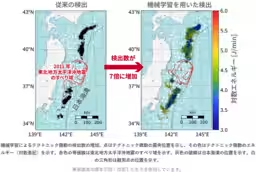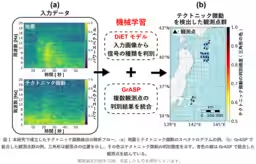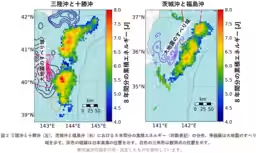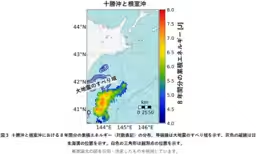

Innovative Machine Learning Technique Enhances Detection of Tectonic Tremors in the Japan Trench
Enhanced Earthquake Detection Using Machine Learning
In a remarkable advancement in seismology, a research team at the National Institute of Advanced Industrial Science and Technology (AIST) has developed a novel analysis flow employing machine learning to detect tectonic tremors—an essential type of slow earthquake—in the Japan Trench. Spearheaded by special researcher Kodai Sagae and assisted by Masayuki Kano from Tohoku University, this innovative approach has unveiled new dimensions in seismic monitoring and analysis by greatly enhancing the sensitivity of detection methods.
Tectonic tremors represent slow earthquakes that occur along tectonic plate boundaries, characterized by their gradual slip. Unlike regular earthquakes, which release accumulated strain instantaneously, slow earthquakes can yield valuable information regarding plate boundary behavior, as they may precede significant seismic events, including major earthquakes. Recognizing the precise locations and timings of these tremors is crucial for understanding stress accumulation and release mechanics along these boundaries.
Scope of Research and Findings
The researchers analyzed eight years of seismic data to put their new machine learning model into practice, discovering an astonishing seven-fold increase in the detection of tectonic tremors compared to traditional methods. This breakthrough involved classifying seismic waveforms to differentiate between regular earthquakes and tectonic tremors effectively. The analysis was carried out using the seismic observation network deployed in the Japan Trench, which has been continuously monitoring seismic activities in the region.
The machine learning method involved the development of a model called DiET (Discriminator for Earthquake and Tremor), which classifies earthquake waveforms based on their frequency characteristics captured in spectrograms. The DiET model, which was trained on data from all 150 observation points of the S-net network, achieved over 97% accuracy in identifying seismic waveforms. This accuracy reflects the model's robustness in recognizing the distinctive patterns of tectonic tremors, thereby greatly assisting in real-time monitoring.
To further enhance the reliability of tremor detection, the team integrated results from multiple observation points using a novel clustering approach based on graph theory, known as GrASP (Graph-based Associator with Signal Probability). This integration allowed the researchers to pinpoint the source location of the tremors detected across different observation sites and better understand their spatial and temporal distribution.
Through applying these combined techniques, the team effectively processed eight years’ worth of seismic data, leading to a significant increase in the identification of tectonic tremors. The research noted that these tremors and the locations of major earthquakes exhibit complementary distributions, illustrating a complex interplay between tectonic activity and stress release.
Social Background of the Research
The Japan Trench region poses substantial risks for large-scale earthquakes, as shown by historical events such as the 2011 Tōhoku earthquake. The slow earthquakes observed in this region are critical to improving our understanding of the mechanisms for stress release and accumulation at plate boundaries. Recognizing and effectively monitoring tectonic tremors can, thus, play an essential role in disaster preparedness and risk mitigation strategies.
As seismic activity often displays complex behavior, detecting tremors with precision can inform predictions and improve our understanding of geological dynamics. Furthermore, given the limitations of traditional seismic monitoring systems in discerning these weak signals, advancing toward machine learning-based methods represents a pivotal shift in seismic research.
Future Directions
The researchers plan to continue monitoring tectonic tremors in the Japan Trench, with aspirations to extend the application of the developed system to other seismic networks, paving the way for comprehensive tremor monitoring. Additionally, they aim to refine their analytical techniques to explore the intricate patterns of tremor activities further, enhancing seismic hazard assessments and contributing to a deeper understanding of tectonic processes.
This groundbreaking study is a testament to the potential of machine learning in geosciences and reflects a significant step towards more effective earthquake detection and monitoring methodologies. This research is detailed in the upcoming publication set for May 31, 2025, in the Journal of Geophysical Research: Solid Earth.




Topics Other)










【About Using Articles】
You can freely use the title and article content by linking to the page where the article is posted.
※ Images cannot be used.
【About Links】
Links are free to use.